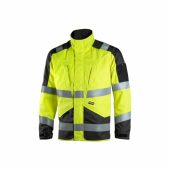Introduction:
Sustainable procurement has become essential for companies seeking to meet global sustainability targets in an age of environmental and social responsibility. Sustainable procurement involves integrating environmental, social, and economic factors into the procurement process to source goods and services that minimise negative consequences and maximise positive outcomes. Sustainable procurement helps organisations improve operational efficiency, decrease costs, and boost their market position while contributing to a sustainable future. This article discusses sustainable procurement’s fundamentals and its many benefits to businesses and society.
Sustainability in procurement
Sustainable procurement (or “green procurement”) integrates ESG goals into procurement, purchasing, and supply chain.
Responsible business practices and sustainable corporate behaviour are integrated into procurement procedures, policies, and decisions. It balances sustainability, profitability, and stakeholder needs.
Sustainability is a strategic direction beyond laws and economics. It takes stakeholder expectations of fairness into account. It seeks good business without jeopardising the future.
The triple bottom line
Sustainable procurement benefits
Sustainability is business-critical. Leading firms are establishing ambitious ESG targets to compete, create consumer value, and innovate with suppliers.
A robust ESG approach can impact profits. McKinsey found that good ESG credentials save costs by 5-10% and boost growth and valuation by 10-20%.
Sustainability improves transparency and holistic procurement, which boosts resiliency. Supply chain analytics and visibility can spot shortages and shocks. Fraud and corruption risk can be reduced via governance. You see more environmental and social threats. This risk reduction includes short- and long-term company contingency planning.
Finally, ESG policies boost brand value. Social impact like work-life balance might make companies more appealing. People choose employers based on their environmental impact. 69% of workers consider a company’s environmental record.
Procurement Models for Sustainability
Let’s start with theory and nomenclature. Before going in, understand the triple bottom line, ESG, and Scope 1, 2, & 3 emissions.
The procurement Triple Bottom Line
The triple bottom line (TBL)—profit, people, and the planet—is a corporate concept that goes beyond financial performance.
Company social footprint assessment is now required. Sustainable organisations appreciate all stakeholders. These include customers, suppliers, staff, and the community. Procurement must incorporate these factors into decision-making.
The ESG framework
Sustainable procurement can also be broken down using ESG.
Environmental criteria include CO2 emissions and waste; social elements include diversity, well-being, and more; governance includes laws and certification compliance. All three parts matter equally.
The ESG framework covers sourcing to delivery. Global leaders recognise that sustainable supply chains can boost competitiveness. Thus, organisations must pressure suppliers to adopt sustainability.
Scope 1, 2, and 3 GHG emissions
The GHG protocol is the most popular greenhouse gas accounting standard. Governments, NGOs, and corporations have applied their GHG emission accounting principles since 2001. They classify GHG emissions into 3 “scopes.”
Scope 1 emissions arise from company-owned or controlled production facilities and vehicles.
Scope 2 emissions are indirect emissions from facilities that supply the enterprise with energy.
Other companies in the supply chain or end-users emit Scope 3 emissions.
Example of automotive production emissions:
- Upstream Scope 3 emissions arise from supplier sourcing, facilities, and transit. Employee commute and other indirect emissions are included.
- Purchased water, heating, and electricity providers emit Scope 2 emissions.
- Scope 1 emissions arise from automotive manufacture and transport. Manufacturer “direct” emissions.
- Non-company transit, business travel, vehicle use, end-of-life processing, etc. cause downstream Scope 3 emissions.
Scope 3’s definition is unclear. Reduce (or compensate) scope 3 emissions to fight climate change. This is also where Procurement may most impact GHG reduction efforts. Carbon ACTION begins with using spend data to create significant carbon reduction measures.
Sustainable Procurement Examples
Sustainable procurement begins with a purchase demand and involves the entire supplier chain.
Green procurement formerly focused on the environment. Today, organisations are being more holistic and considering social and economic concerns.
Private and public sector sustainable procurement examples:
Sustainable sourcing
New sourcing tactics involve sustainable procurement. About 24% of manufacturing executives evaluated customer-facing operations in 2022.
Local sourcing, or onshoring, promotes supply-chain agility. By connecting the supply chain, you reduce carbon emissions and save money.
Another example is using recycled or upcycled materials. Leading fashion companies and retailers engage in such material breakthroughs.
- Adidas, BESTSELLER, and H&M invested 30 million euros in Infinited Fibre, which recycles waste fabrics into high-quality fibres.
- Another textile option composed of wood or waste, Spinnova, saves more CO2 than it emits. Adidas released its first SPINNOVA®-fiber product after a $135 million IPO.
- Finnair upgraded its onboard amenities to use less SUP and more ecological materials. Bio-plastic with cornflour replaces plastic in the toothbrush. Plastic earplug wraps are wax paper. The Business Class slippers are 100% recycled PET bottles. Finnair has cut roughly 4,500 kilogrammes of plastic trash annually with these modifications.
Sustainability for competitive advantage
A growing number of companies provide sustainable products and missions. These organisations differentiate by aligning their principles with environmentally conscious customers.
Sustainability can inspire product innovation. These companies are advancing the circular economy with sustainable innovations:
- Repreve recycles ocean plastic into fibres. The North Face and Ford automobile seats use their material.
- Sulapac has developed an eco-friendly plastic replacement that can be made using existing machines. Their work appears in N° 1 de CHANEL and Four Seasons Resort.
- Huhtamaki, a sustainable food and packaging solution for coffee cups and lids, reduces waste. First 100% renewable plant-based paper cup is Huhtamaki Future SmartTM.
Sustainability demands business landscape knowledge to preserve profitability and competitiveness. You can’t succeed without smart business thinking! Sustainability requires commercial acumen.
Public procurement sustainability
Public procurement organisations can also contribute. Government agencies and municipal governments use green public procurement.
Public sector can implement this guide’s concepts alongside private sector. Stakeholder interests and values are much more important in public procurement because taxpayer money is involved. Politics makes satisfying numerous stakeholders difficult.
ESG aspects in public spending are being strictly regulated by many local and national governments. Through government spending, sustainable public procurement strategies address sustainability. The sustainable agenda is addressed through buying solutions, vendor selection, and life cycle assessment.
Read more about sustainable public procurement:
- Article on UNEP Sustainable Public Procurement
- European Commission Green Public Procurement Initiative History
- PDF Australian Government Sustainable Procurement Guide
Sustainable procurement drivers
Procurement ESG practices are influenced by external and internal factors. Some are company-specific, others global macro themes. Law & regulation, industry competition & stakeholder pressure, and CSR & genuine change drive sustainable procurement.
These drivers are enough to address procurement sustainability. A sustainable procurement plan needs eight skills:
- Knowledge of global, regional, and local actions
- Support from mission, culture, strategy, and people
- Leadership committed to CSR
- Integration of strategic and operational decisions
- Effective performance measurement and rewards
- Methodical risk management
- Organised, transparent communication
- Sustainability as an innovation opportunity
These needs include top-level management commitment, a company-culture-based strategic vision, and decision-making policies. Most importantly, sustainability must be purposeful, not just reported.
The value of analytics and data
Supply chain transparency and performance require good data. You may increase primary data availability and quality by gathering data from essential providers.
High-quality secondary data like industry and manufacturing location average emissions should be collected. Targeting supply chain emission hotspots with this data is critical.
Good data and analytics help you find sourcing opportunities, consolidate suppliers, and make sustainable sourcing decisions. Effective sourcing requires supplier performance and TCO assessment.
Experienced procurement professionals realise TCO goes beyond pricing. This relates to sustainable performance evaluation.
Due to long shipping, a provider may use renewable products but increase their carbon impact.
Outside data partners
Third-party enrichment improves procurement analytics. Integrating external data into internal systems improves your company’s sustainable success.
Sievo partners with top data suppliers to enrich spend data and track sustainability:
- The Dun & Bradstreet Corporation provides commercial data, analytics, and insights on over 100 million organisations worldwide. Dun & Bradstreet’s data is seamlessly linked into Sievo’s procurement analytics platform and updated in real time through a global partnership with Bisnode, giving customers more accurate supplier relationship information.
- Ecoinvent publishes the most reliable and transparent life cycle inventory database.
- Ecovadis: the most trusted worldwide supply chain company sustainability ratings, intelligence, and collaborative performance improvement tool provider.
- Exiobase presents a global, detailed Multi-Regional Environmentally Extended Supply-Use Table (MR-SUT) and Input-Output Table.
- Rapidratings: advanced financial analysis of public and private enterprises in 150 countries. The company’s predictive analytics predict supplier, vendor, and third-party performance.
- Riskmethods proactively identifies, assesses, and mitigates supply chain risk.
- Over 30% of Fortune 500 firms use Supplier.io, the global pioneer in supplier diversity solutions for 20 years.
Making a sustainable procurement policy
Sustainable procurement policies outline strategy goals, processes, and KPIs. It should outline your ESG goals and methods.
Learn to build a sustainable procurement policy in 5 steps.
1. Building sustainable procurement business case
Your organization’s needs, priorities, values, resources, and stakeholder needs are important when making a sustainability case.
Focus and prioritise. These are important factors for establishing your sustainable business case:
- Does your firm value and embody sustainability?
- Do you use sustainable techniques to please your customers or investors and stakeholders?
- Do you promote sustainable procurement to meet government regulations?
- The role of procurement in your company?
Once you know the purpose, talk to stakeholders:
- Align sustainability positions within.
- Determine whether country-specific requirements apply to you and which company functions are responsible.
- Consider how much detail your key stakeholders expect.
- Consider industry standards for sustainable development and competitive advantage.
Your sustainable procurement goal and aspiration. Inspire but be realistic. Supplier scoring helps create realistic and efficient goals.
Management, Procurement, Sustainability, and Compliance should agree on the business case and advantages. Sustainable procurement policy development and implementation require top management involvement. Designate policy sponsor and owner.
After determining your purpose and direction, you can start the sustainable buying policy.
2. Align ESG Goals
Different business types and industries may have different CSR priorities. Your sustainable buying plan should reflect your business priorities and risks. ESG objectives provide direction, commitment, and progress measurement.
Example ESG sustainable procurement policy goals:
Environmental goals:
- 100% compliance with industry environmental norms
- 100% of key suppliers’ environmental impact assessment
- Reduce energy and water use by X%
- Reach carbon neutrality by 2030
- Plastic-free by 2030
Social goals:
- Support for UN Sustainable Development Goals
- Always pay living wages and no child labour
- 100% health and safety audit compliance
- 100% Modern Slavery Act compliance
- UNGPs on Business and Human Rights compliance 100%
Goals for governance:
- Full conformity with laws and regulations
- Complete anti-bribery and anti-money laundering compliance
- X% of key suppliers joined sustainability programme
- X% of suppliers are diversified.
After setting ESG targets, analyse the current condition. Data underpins current state analysis. Determine your behaviours, procedures, and sustainable performance gaps. Compare the current condition to ESG goals and future legislation. You may find new priorities.
Join Together for Sustainability (chemicals), Railsponsible (rail), or AIAG (automotive) to update your industry targets. Joining an industry initiative and meeting targets keeps you accountable.
3. Plan strategy and action
Your sustainable procurement policy should be explicit so your company’s buyers know their duties.
Integrate ESG goals into purchase decisions. Rethink your purchase-to-pay process and map sustainable decision points. Add sustainability to your RFP assessment criteria.
Category management: Determine your most important purchase categories with the greatest sustainability concerns. Create a sustainable procurement strategy and action plan for each category.
Communicate internally: Share your sustainable procurement goals with stakeholders in Q&A sessions. Implementation by function and category. Encourage responsible shopping.
Roles and responsibilities: Introduce the RAM (RACI) matrix. Responsible, accountable, consulted, and informed—RACI. This is a cacao example.
Responsible = Director Direct Spend
Responsible: Cacao Category Manager
Consultant: Raw Material Sustainability Manager
Chief Procurement Officer informed
Aligning roles and duties helps you execute your plan and avoids confusion.
Knowledge sharing: All procurement firms have sustainability challenges and opportunities. They have varied development levels and focus areas based on their sector. Compare and discuss best practices with industry colleagues and later-stage procurement experts. Success tales inspire and inform.
4. Manage and improve supplier performance
Suppliers are crucial to sustainable procurement. You should standardise supplier selection and share your sustainability standards with providers during sourcing and onboarding. Inform vendors of your sustainable procurement policy, mission, and goals.
Find important and critical suppliers who have the greatest impact on sustainability. Supplier segmentation with procurement team support. Your policy may incorporate multiple sustainable practises and verification techniques based on product or service buy volume and company impact.
Be upfront about their performance—enroll suppliers in relevant programmes and track sustainability KPIs. Environmental and sustainability audit criteria, performance development, and corrective action validation are recommended.
Your sustainable procurement policy should outline supplier performance monitoring and reporting. The policy should also address poor performance, breaches, and audit deviations.
5. Sustainability reporting
Annual reports include sustainability reporting. Demand for more accurate sustainability programme reporting is growing. Sustainability reporting requires facts and accurate information to show performance.
Reports track compliance and inform sustainable goals.
Procurement teams are using new data and analytics to assess product and service sustainability. ESG performance development programmes and category, business unit, line, supplier, and product carbon footprint tracking are achievable using sustainable data and analytical tools.
Continuous assessments and measurements are needed to monitor supplier sustainability. This monitoring is crucial for critical Tier 1 suppliers.
Tracking and reporting sustainability requires data sharing and analysis. Fortunately, market availability and expertise to acquire credible sustainability data have increased. Solutions exist to set baselines, KPIs, track progress, and report successes.
Dashboards and portals allow professionals to securely, quickly, and privately exchange plans and metrics with partners and stakeholders. These analyses require trustworthy internal and external data sources, automated data management, and professional data fusion for useful insights.
Sustainable procurement KPIs
Each company chooses metrics depending on their business and industry priorities. Environmental metrics include climate, waste, and energy measures. Although region- and company-specific, social and governance measures can be modelled after sustainable leaders.
KPIs for carbon emissions
Greenhouse gas (GHG) emissions and other pollutants cause most climate change. Corporate environmental effect is disclosed by the UK-based Carbon Disclosure Project (CDP). Additionally, the International Integrated Reporting Council (IIRC) offers comprehensive corporate reporting to demonstrate sustainable value to investors.
Companies can evaluate their climate change impacts.
- Direct CO2 emissions
- Indirect CO2 emissions
- CO2 per employee from business travel
- Other harmful emissions type-wise
Energy and power KPIs
Water sustainability is important for many companies, notably in manufacturing and FMCG. Organisations can monitor water usage, quality, environmental impact, and leaks and evaporation.
Companies are also focusing on waste management to support the circular economy. Food and packaging waste, hazardous materials, debris, industrial waste, and disposal are waste types. Plastic packaging and single-use materials can be replaced by recycled, recyclable, routable, or circular materials.
These metrics uncover energy-saving opportunities, saving money and reducing pollution.
- Monthly production energy use kWh
- Office energy use, kWh/m2/month
- % energy savings from improvements
- Transportation fuel
- Total supply chain miles
- Water use
- Litres of water consumed
- Water recycling percentage
- Reused water percentage
- Type, volume, and disposal of product waste
- Used recycled material percentage
- Returned/used/recycled packaging
Social KPIs
Data and analysis are needed to evaluate human rights goals including improving living conditions and creating jobs in affected communities. Employee wellness, diversity, and inclusion are quantified. Other social measures are harder to track.
The Anker Living Wage and Living Income Research Institute produces high-quality, reliable, objective living wage and wage gap data. Wage improvement programmes in ESG projects are supported.
These KPIs measure social impact. They should measure employee and community quality of life. Recommended KPIs:
- Employee happiness and engagement
- Community involvement, volunteerism
- Near misses reported
- Type and number of risky behaviours
- Sustainability awareness training succeeds
- Work-life balance, hours
- People development, learning hours
- Numerous communal initiatives
- DEI survey results
- % supplier diversity increase
Governance KPIs
Finally, governance metrics should measure your industry sector’s regulatory compliance. They should evaluate your company and suppliers’ compliance. Corporate governance KPIs:
- Supplier code of conduct/guiding principles compliance
- Compliance with industry rules
- Following UN global conduct
- Meeting safety and security standards
- Supplier CSR audit percentage
- Supplier self-assessment questionnaire completion/share
Unpacking carbon reporting frameworks
In an environmentally conscious era, organisations are using carbon reporting frameworks to monitor, manage, and reduce their carbon impact. Companies can improve transparency, accountability, and sustainability by using these frameworks to assess and disclose greenhouse gas emissions.
CDP Carbon Disclosure
Thousands of companies worldwide provide environmental data to the CDP, including supply chain emissions. Companies can report supply chain emissions, risks, and opportunities in CDP’s yearly questionnaire.
The CDP helps organisations measure their supply chain sustainability performance against industry peers and find opportunities for improvement.
Greenhouse Gas Protocol
The WRI-WBCSD GHG Protocol sets criteria for measuring and reporting greenhouse gas emissions.
The GHG Protocol’s Corporate Value Chain (Scope 3) Accounting and Reporting Standard provides a complete framework for firms to assess and report Scope 3 emissions, including supply chain emissions. GHG Protocol techniques help organisations make educated decisions and reduce emissions by ensuring emissions reporting consistency and comparability.
Climate-related Financial Disclosures Task Force
TCFD recommends disclosing climate-related risks and opportunities in financial filings. While not specific to supply chain emissions, TCFD encourages companies to report on their climate impacts, including supply chain emissions, and consider climate-related risks and opportunities in their business strategy.
Companies can boost investor and stakeholder trust by incorporating TCFD principles into sustainability reporting to improve climate change transparency and resilience.
Global Reporting Initiative
GRI sustainability reporting rules mandate greenhouse gas emissions reporting. GRI advises enterprises to report scope 3 emissions, including supplier chain emissions, to give stakeholders a complete picture of their environmental impact.
Companies can build stakeholder trust by signing up to GRI standards for sustainability reporting transparency and accountability.
ISO 14064-1
ISO 14064-1 is an international standard for measuring and reporting greenhouse gas emissions and removals. ISO 14064-1 can help companies report their emissions, including supply chain emissions, consistently and transparently.
Companies can improve emissions data reliability and credibility by following ISO 14064-1 guidelines, enabling informed sustainable decision-making and stakeholder participation.
Measure sustainable performance
Sustainable procurement requirements change. KPIs must also improve. Businesses must assess supplier loyalty and performance.
Successful sustainability performance tracking requires trustworthy data, industry expertise, and analytical skills. In addition to tracking KPIs, procurement must communicate results and drive organisational change.
Procurement must identify emission hotspots and spend areas with the greatest ESG effect and improvement potential. Concentrate on major suppliers and risk areas to make the maximum impact.
Reporting is best for keeping sustainability relevant. Formal standards give reporting structure and transparency.
Sustainability reporting is a separate topic, but as multinational corporations standardise their reporting, comparisons will be easier.
No worldwide sustainability tracking and reporting mechanism exists. 73% of the 250 largest corporations utilise GRI Standards, which are near. The modular GRI Standards include the Universal Standards, Sector Standards, and Topic Standards.
GRI norms
Track carbon and GHG emissions using a carbon management tool. You may calculate your footprint by integrating supplier data and spend data.
Carbon management software has further features:
- Collecting scope 1, 2, and 3 emissions data
- CO2 Insights: AI-powered insights on decarbonisation potential for quick action.
- Comparing KPIs and visualising results
- Better sustainability reporting with greater detail
- Selecting the best reduction strategies
- Create what-if scenarios and learn
- Carbon footprint budgeting and net-zero emissions planning
Sustainability in supplier development and selection
Suppliers are crucial to sustainability. They must grasp your goals and their role in attaining them to engage. You can count on suppliers to help you innovate.
Businesses use collaboration and incentives to improve supplier performance through supplier relationship management (SRM). SRM is ideal for expressing goals and enhancing sustainability.
SRM should benefit both parties. SRM is ongoing. Good intentions and consistency are needed. Research and development with suppliers might create new solutions.
You should also observe others, work with partners, share best practices with industry peers, and participate in global discussions. Sustainability research, development, and implementation costs drop with demand and standardisation.
Sustainable supplier selection
First, include your company’s environmental goals into supplier selection. This ensures you choose ESG-friendly providers.
Nike and Adidas suffered after suppliers spilled pollutants into China’s rivers. The right sustainability standards could have prevented this.
Basic supplier selection criteria include pricing, delivery, and quality. TCO, product quality, capabilities, consistency, and risk are considered more carefully. Sustainability is becoming a supplier selection factor for many companies.
These questions can start a sustainability conversation with suppliers:
Environmental Standards of Suppliers
- Does your EMS have certification?
- How are emissions, energy, waste, and water managed?
Social Standards of Suppliers
- What is your human rights/fair pay/working conditions/diversity policy?
- You follow UN Global Conduct?
- Do you follow fair trade?
- Your health and safety record?
Supplier Governance
- Do you prohibit bribes and corruption?
- Are you compliant with industry laws?
- Have you been prosecuted or penalised for infringements?
Suppliers may ask “what’s in it for them” to adopt new practices and rules. Maintaining business ties is advantageous. Research, development, and invention are other benefits. These activities affect both parties’ future prosperity and customer pleasure.
However, sustainability requires collaboration. Collaboration in sustainability creates innovative goods, smarter solutions, and more efficient processes. The goal is to encourage improvement, not punish.
Segmenting suppliers
An organisation can better manage internal and external resources using supplier segmentation. Suppliers are segmented by business effect, criticality, and spending. Critical (“key suppliers”), volume, bottleneck, and routine are standard supplier segments.
Strategic partners, critical suppliers, and at-risk suppliers are often SRM targets. Key suppliers have the most money to affect sustainability targets. Suppliers at risk face the most dangers.
There are various approaches to assess supplier risk. ABC, spatial analysis, third-party reporting, indexes, scorecards, and assessment methods are options. Pareto and expenditure analysis can identify supply disruption-prone vendors.
Modelling governance and relationship steering
Structured people, controls, and mechanisms form an SRM governance model. Governance models typically include:
- Solution processes and escalations.
- Accountable persons and their duties.
- Details about corporate responsibility and partnership.
In a governance model, top management sets sustainable development aims, account management creates a roadmap and performance measures, and operations implements them in daily business operations.
An SRM steering group ensures structured relationship management, decision-making, and work direction. Experts on various issues form steering groups. A critical supplier relationship steering group may include sustainability, human rights, or circular economy consultants.
Develop suppliers
Sustainable supplier relationships demand ongoing improvement. Goal-setting and performance tracking are required. Choose KPIs for supplier and business performance. SLAs determine KPI measurement methods and timing.
You and your suppliers may improve resource and energy efficiency, process optimisation, waste reduction, and sustainable innovation by working together.
Developing jointly is fundamental to sustainable supplier management. Suppliers offer new perspectives and ideas for adopting responsibility into your supply chain, product development, and sourcing. You can develop unique collaborations to implement best practices in all procurement choices and explore beyond Tier 1 suppliers as your organisation matures.
Consider hosting industry-specific learning and development days. Honour top performers.
Joint Innovation
In “A new approach to contracts,” the Harvard Business Review suggests a new arrangement. A “relational contract” provides a flexible foundation for collaboration. Legal contracts set joint aims and governance systems to align parties’ expectations and interests.
Contracts enable collaboration and sustainable development. A durable contract emerges and benefits both parties.
True partnerships involve collaborative commitments and development initiatives to ensure success. These goals are rarely supported by traditional contracts. They describe just the parties’ transaction and business duties.
Purchase and supply agreements rarely foster long-term partnerships. Many use the word partnership loosely, yet the buyer benefits.
Legal sustainability: Examples
Supply Chain and Procurement requirements change frequently. As sustainability legislation becomes more complex, global corporations that don’t comply with stakeholders risk lose their licence to operate and suffer brand damage.
Companies must now comply with sustainability laws, not NGOs and consumers. Monitoring these changes is easier with a network of sustainable buying partners.
The most popular ESG performance measurement guidelines are:
- UN Global Compact
- ETI Base Code
- MNE Proclamation
- International Labour Standards
- UN Guiding Principles on Business and Human Rights
- Global Reporting Initiative
- ISO 14001, 26000
- SA8000 Standard
Example laws promoting sustainable procurement:
The European Green Deal (EGD) and Corporate Sustainability Reporting Directive (CSRD) are major elements of the EU’s sustainable development and climate change strategy.
Sustainable Corporate Reporting Directive
EU legislation like the business Sustainability Reporting Directive (CSRD) improves and standardises business sustainability reporting. It expands the Non-Financial Reporting Directive (NFRD)’s sustainability disclosure breadth and openness. A full CSRD overview:
Investors, customers, legislators, and the public want comprehensive and credible sustainability information from companies, according to the CSRD. From 2025, organisations must provide specific performance data in certain areas:
- Environment matters
- Social issues and employee treatment
- Respecting human rights
- Bribery/anti-corruption
- Diversity on corporate boards
EU Green Deal
The EU Green Deal cuts greenhouse gas emissions to reach climate neutrality by 2050. The framework specifies many activities and methods to reduce greenhouse gas emissions, improve resource efficiency, and promote inclusive economic growth. To attain climate neutrality, procurement and sustainability leaders should follow the EU Green Deal and incorporate sustainability criteria into procurement processes.
Plan for Circular Economy
The European Green Deal relies on the Circular Economy Action Plan (CEAP). It promotes sustainable growth by switching from linear to circular economies. The approach reduces waste, improves resource efficiency, and creates a closed-loop system to keep products, materials, and resources in the economy.
Leaders in procurement should prioritise circular economy principles and sustainable production and consumption. Sustainability leaders can promote circularity and work with suppliers on circular business models.
Regulation for Sustainable Finance Disclosure
European financial market actors must publish environmental sustainability information under the Sustainable Finance Disclosure Regulation (SFDR), supporting scope 3 emissions reductions.
SFDR fights greenwashing, builds trust, and promotes sustainable investing. It is vital to connecting the financial industry with EU sustainability goals and the European Green Deal.
CBAM — Carbon Border Adjustment Mechanism
EU’s Carbon Border Adjustment Mechanism (CBAM) proposes carbon taxes on imported goods to reduce carbon leakage and encourage emission reductions. CBAM helps the EU meet its climate goals by guaranteeing that imports meet the same environmental criteria as domestic products. CBAM promotes sustainable practices abroad and protects EU companies from unfair competition.
Red II Renewable Energy Directive
The Revised Renewable Energy Directive (RED II) aims to increase renewable energy deployment and sustainability, affecting bioenergy emissions. Sustainability leaders promote sustainable renewable energy initiatives, while procurement leaders investigate renewable energy sourcing and support suppliers.
Single-Use Plastics Directive
The EU’s Single-Use Plastics Directive (SUP Directive) restricts single-use plastic products and encourages recycling to reduce marine litter and environmental impact. Sustainability executives can lead company-wide plastic reduction and circularity activities, while procurement leaders must grasp its effects on sourcing and product choices.
Modern slavery laws
Modern slavery is the recruitment, movement, harbouring, or receipt of people of all ages through force, compulsion, abuse of their vulnerability, fraud, or other means for economic or personal gain (UK Government).
The UK Modern Slavery Act took effect in 2015, Australia in 2018. UK companies with a revenue over £36m (including subsidiaries) that supply products and services must report their slavery elimination efforts annually. The Australian government mandates companies with a turnover over AUD $100 million to report annually.
The EU advises on “forced labor” hazards in operations and supply chains. Not yet legally binding, guidance. Belgium was a pioneer in modern slavery laws. The Federal Parliament approved a due diligence measure in 2021 to require firms to identify and prevent human rights breaches and minimise ESG risks in their supplier chains. It comprises criminal penalties and victim compensation.
The German Supply Chain Act
On Corporate Due Diligence Obligations in Supply Chains, or LkSG, is the German Supply Chain Act.
Large firms must identify, prevent, and redress human rights and environmental abuses in their and their suppliers’ operations under the Act. It’s the first law forcing German corporations to be more sustainable. Around 600 German enterprises will be regulated initially.
Do It Now
We hope you enjoyed reading. Your sustainable procurement plan should be underway. We can help if you’re unsure and lack the data and resources to create your sustainable procurement path.
Clear Data, Impact
Reduce emissions by understanding them. Sievo CO2 Analytics helps you report Scope 3, the most difficult part of emissions reporting, with AI categorization, personalised insights, and one-click actions. 80% of CO2 emissions are in the supply chain. Spend data is crucial to decarbonisation.
Sustainable firm performance requires accurate and timely data. An organization’s sustainability path is most hampered by data accuracy and resources. Sustainability goals need regular validation and change. Sievo provides accurate spend, quantity, and supplier-level estimates, with 98% categorization coverage and 94% data accuracy, enabling you to address emissions hot areas.
Cost-Carbon Balance
Sievo helps hundreds of customers target expenditure where it matters most. CO2 Analytics lets you compare scope 3 emissions to spend and find efficient strategies to cut them. SpendMatters ranks our CO2 Analytics solution first in analytics and deployment.
Just Act, Not React
Sustainability Analytics may help you enhance your supplier chain’s Environmental, Labour & Human Rights, Ethics, and Sustainable Procurement targets. Sievo Diversity Analytics improves supply chain agility and resilience and gives you a competitive edge by diversifying your supplier base.
Conclusion:
Finally, sustainable procurement methods are a strategic investment in a more responsible and resilient supply chain. Organisations may improve operations and make a difference by prioritising environmental stewardship, social equality, and economic efficiency. Sustainable procurement offers innovation, cost savings, and brand reputation beyond compliance and risk management. Sustainability must be included into procurement procedures for long-term profitability and contributing to a more sustainable environment as firms negotiate global supplier chains and changing regulations.













